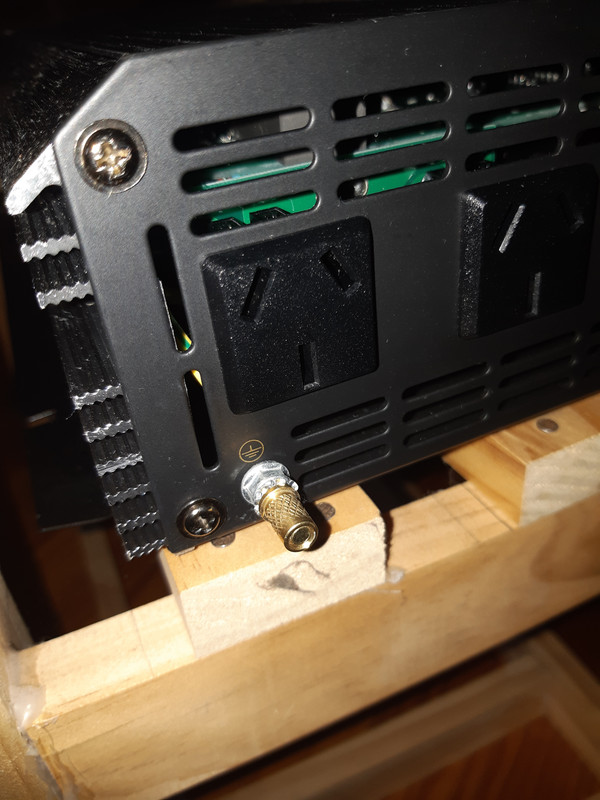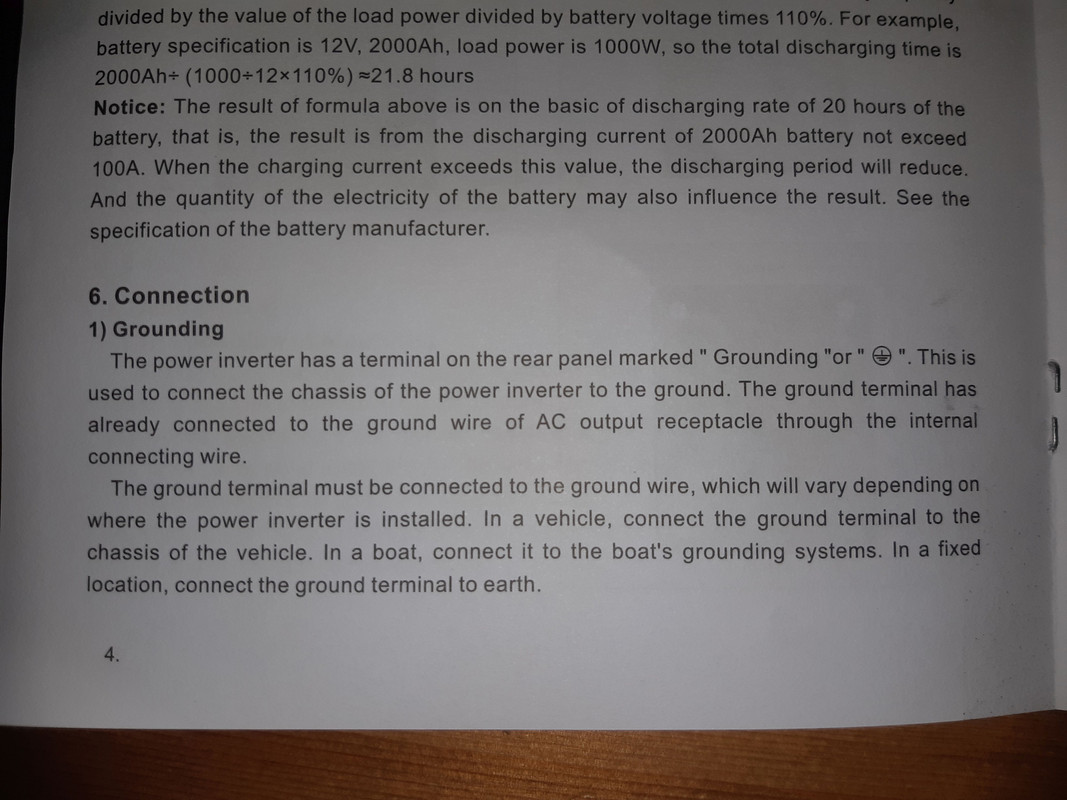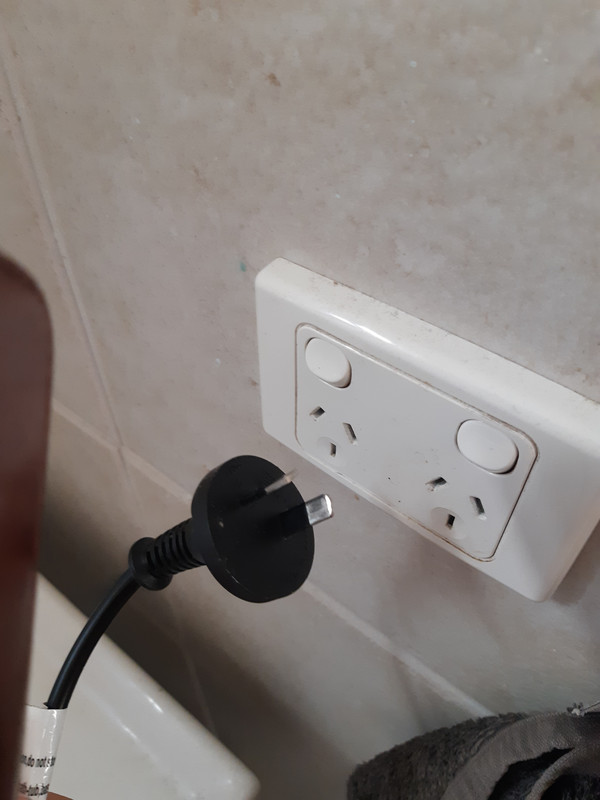new2renewing
New Member
- Joined
- Nov 11, 2020
- Messages
- 21
Hi all,
Please dumb it down for me as I have searched & searched, and read & read, and am even more confused about whether or not to ground my inverter.
Setup:
Max output required: 2450w through single power board and extension cable.
In Australia (240V AC).
Giandel 3300W/6600W pure sine inverter
3300W Giandel link
I have a resistor to pre-charge the inverter as it is over the recommended 1500-1700W for pre-charging.
1 (soon to be 3) parallel Renogy 1000AH 12V Lifepo4
2/0 wire + 300A battery to inverter fuse
20A solar coming in via renogy wanderer pwm (soon upgrading to 60A via tracer mppt)
I will be storing the inverter, batteries, and charge controller on this homebuilt frame:

Here is a photo of the grounding terminal:

The manual of the inverter mentions grounding in this paragraph:

I am planning to leave this in the laundry on ceramic tiles, with an extension cord running into the main house. Followed Will's basic build on a board for 1st setup, so this is my second build. He never mentioned anything about grounding.
My questions are:
1. Do I have to ground this system?
2. Is the inverter chassis itself "live" or any other way dangerous whilst being used from battery/solar?
3. Is the battery, or any of the wires, or the cables running from AC outlets dangerous (assuming no faults or exposed wires)?
4. Will the tiles or any part of the surrounding area be dangerous if grounded/not grounded?
5. Anecdotally, I didn't ground my 1000W inverter 1st system. Often touched it, obviously to turn inverter power on, or to move the wooden frame. My family also would brush past it whilst heading out the back. Was I putting my family at risk?
Sorry in advance if these questions are really simplistic & thanks in advance
Please dumb it down for me as I have searched & searched, and read & read, and am even more confused about whether or not to ground my inverter.
Setup:
Max output required: 2450w through single power board and extension cable.
In Australia (240V AC).
Giandel 3300W/6600W pure sine inverter
3300W Giandel link
I have a resistor to pre-charge the inverter as it is over the recommended 1500-1700W for pre-charging.
1 (soon to be 3) parallel Renogy 1000AH 12V Lifepo4
2/0 wire + 300A battery to inverter fuse
20A solar coming in via renogy wanderer pwm (soon upgrading to 60A via tracer mppt)
I will be storing the inverter, batteries, and charge controller on this homebuilt frame:

Here is a photo of the grounding terminal:

The manual of the inverter mentions grounding in this paragraph:

I am planning to leave this in the laundry on ceramic tiles, with an extension cord running into the main house. Followed Will's basic build on a board for 1st setup, so this is my second build. He never mentioned anything about grounding.
My questions are:
1. Do I have to ground this system?
2. Is the inverter chassis itself "live" or any other way dangerous whilst being used from battery/solar?
3. Is the battery, or any of the wires, or the cables running from AC outlets dangerous (assuming no faults or exposed wires)?
4. Will the tiles or any part of the surrounding area be dangerous if grounded/not grounded?
5. Anecdotally, I didn't ground my 1000W inverter 1st system. Often touched it, obviously to turn inverter power on, or to move the wooden frame. My family also would brush past it whilst heading out the back. Was I putting my family at risk?
Sorry in advance if these questions are really simplistic & thanks in advance
Last edited:






